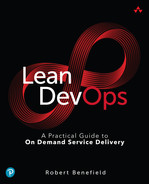Foreword
Just about everyone can remember being inconvenienced by a computer outage at sometime during their lives. I particularly remember walking into the Melbourne airport on a sunny Saturday morning and discovering that the computer which ran all the check-in terminals was down. It stayed down all morning, exposing just how time-consuming and awkward the manual check-in process was. Some of us made it to our destinations many hours late; others were not so lucky. And I remember the hours-long check-in lines at the Baltimore airport many years later; the computer running Southwest’s check-in kiosks was out and this time there was no manual backup process. After multiple long lines, we raced to our gate just in time to board before the door closed on a half-empty plane.
As I stood in those lines, I imagined the scene in the data center where “emergency responders” were no doubt scrambling to bring the system back up; after all, I had been there. Some years ago, I managed a factory data center, and we knew that any outage longer than a half hour would seriously curtail pack-out. It only happened once, and believe me, that was one time too many.
At last, we have a book written for the people on the emergency response side of a computer outage. It’s not a book focused on being agile or lean; it’s a book that focuses on being ready: ready to prevent serious service delivery problems, ready to limit the damage when they happen, and ready to uncover the cause of any incident and keep it from happening again. You would think, given our increasing reliance on technology, that there would be a lot of information about how to do these things well. But I haven’t seen a lot of guidance for those who hold this challenging job, at least until now.
We have decades, if not centuries, of experience handling emergency situations in fire departments, hospitals, and military organizations. But rarely have we thought to apply that experience to the technical world, probably because we don’t consider a technical failure to be a matter of life or death. But as Robert demonstrates throughout this book, lessons from other domains can be surprisingly relevant for those seeking to prevent computer outages and, when they do (inevitably) occur, limit their damage and ensure a rapid, safe recovery.
Service delivery teams do a lot more than minimize outages and smoothly handle any that may arise; they provide a critical interface between their organization and its consumers. This book is based on a simple premise—the purpose of a technical system is to bring about expected outcomes for its consumers, and the purpose of service delivery teams is to ensure those expectations are met. They do this by understanding consumers’ intent when using the service, discovering what prevents consumers from achieving the outcomes they expect, and learning how to improve the system and close the gaps.
This book is not about meeting service delivery targets; it’s about paying attention: paying attention to consumers, being aware of their expectations, and being attentive to their frustrations. It’s about paying attention to the ways in which complex technical systems interact, how information flows through organizations, and how decisions are made and executed. It’s about paying attention to and improving the way work gets done and the outcomes that are delivered.
Be warned that focusing on delivering outcomes is a novel concept for IT teams, because historically, there was a large time and distance gap between technical teams and their consumers. Most “standard” IT practices, including Agile practices, presume that an intermediary translates consumer intent into proxy features and goals, which then guide the decisions of the technical team. This book eliminates such proxies, and in doing so, it may contradict some of your views on appropriate roles, responsibilities, and processes. Therefore, you might want to check your confirmation bias at the door as you enter, because, as the saying goes, “It ain’t what you don’t know that gets you into trouble. It’s what you know for sure that just ain’t so.”
This is an important book. It is well written and engaging, with great stories and easy-to-understand analogies. It simultaneously challenges readers and offers very practical advice. I highly recommend it.
Mary Poppendieck
January, 2022
Register your copy of Lean DevOps on the InformIT site for convenient access to updates and/or corrections as they become available. To start the registration process, go to informit.com/register and log in or create an account. Enter the product ISBN (9780133847505) and click Submit. Look on the Registered Products tab for an Access Bonus Content link next to this product, and follow that link to access any available bonus materials. If you would like to be notified of exclusive offers on new editions and updates, please check the box to receive email from us.
